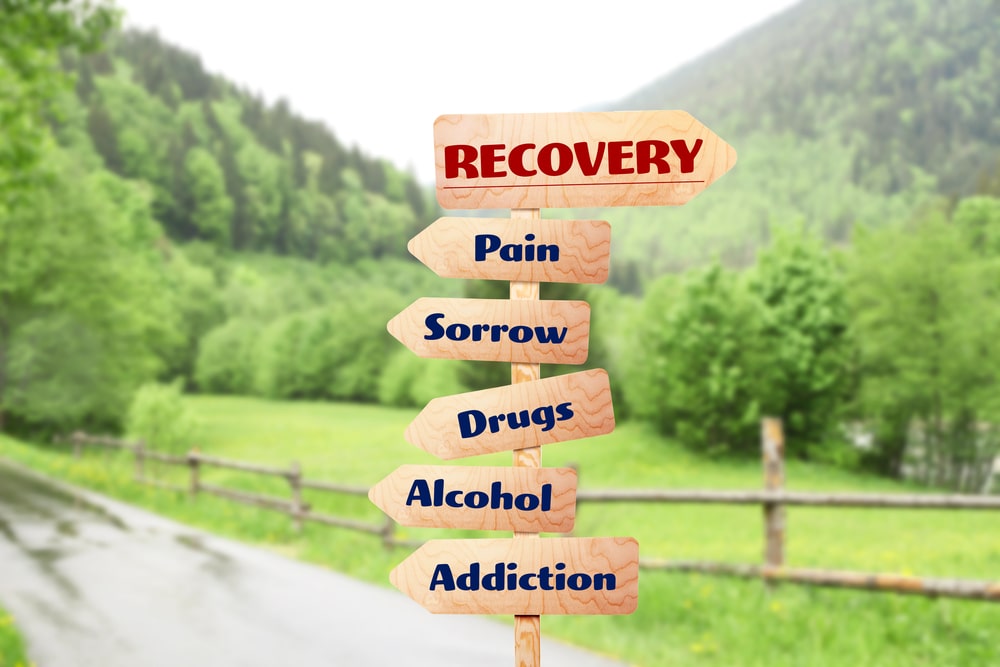Chemical dependency is a complex and often misunderstood condition that affects millions of individuals and their families worldwide. It involves a compulsive use of chemical substances despite detrimental health, social, and legal consequences. This blog aims to shed light on the nature of chemical dependency, explore its causes, discuss its impact, and offer insights into the recovery process.
Contents
What Is a Chemical Dependency in Psychology?
 In psychology, chemical dependency refers to a condition characterized by an uncontrollable compulsion to use substances such as drugs or alcohol, despite the adverse consequences. This dependency is not just a physical reliance on substances but also includes psychological elements. Individuals with chemical dependency often continue substance use because it provides relief from psychological discomfort.
In psychology, chemical dependency refers to a condition characterized by an uncontrollable compulsion to use substances such as drugs or alcohol, despite the adverse consequences. This dependency is not just a physical reliance on substances but also includes psychological elements. Individuals with chemical dependency often continue substance use because it provides relief from psychological discomfort.
Over time, their tolerance to the substance increases, leading to higher consumption to achieve the same effects, which reinforces the dependency cycle. The psychological framework of chemical dependency involves various cognitive and emotional processes that perpetuate the addiction cycle. Treatment approaches often focus on addressing the underlying emotional and mental patterns through therapies.
What is an Example of Substance Dependence?
An example of substance dependence is alcohol dependence, commonly known as alcoholism. This condition is characterized by a strong, often uncontrollable, desire to drink alcohol. Individuals with alcohol dependence continue to consume alcohol despite clear evidence of harm to their physical health, mental well-being, and social relationships.
They may experience withdrawal symptoms when not drinking, such as nausea, sweating, shakiness, and anxiety. This often compels them to resume drinking to alleviate these symptoms. Hence, over time, alcohol dependence can lead to increased tolerance, where the individual needs to consume more alcohol to achieve the same effects previously obtained with less.
The psychological and physical grip of alcohol makes it difficult for those affected to quit without professional help.
What Are The Causes And Risks Of Chemical Dependency?
 Chemical dependency arises from a complex interplay of factors that increase an individual’s risk of becoming dependent on substances like alcohol, drugs, or prescription medications. Here are some of the primary causes and risk factors:
Chemical dependency arises from a complex interplay of factors that increase an individual’s risk of becoming dependent on substances like alcohol, drugs, or prescription medications. Here are some of the primary causes and risk factors:
Genetic Predisposition
Research indicates that genetics can significantly affect chemical dependency, accounting for about 40-60% of the risk. Individuals with a family history of addiction or substance abuse are statistically more likely to develop similar issues. Specific genes may affect how a person’s body processes substances or how they experience pleasure and rewards from these substances.
Environmental Influences
The environment in which a person grows up and lives can significantly impact their likelihood of developing chemical dependency. This includes factors like exposure to drug use in the family or community, peer pressure, cultural norms surrounding substance use, and the availability of drugs and alcohol. Stressful or unstable home environments, poverty, and exposure to abuse or neglect can also increase risk.
Psychological Factors
Many psychological conditions and emotional distress can predispose individuals to chemical dependency. Common factors include depression, anxiety disorders, post-traumatic stress disorder (PTSD), and other mental health disorders. People often use substances as a form of self-medication to alleviate mental distress, escape from problems, or manage symptoms. This can lead to dependency.
Early Use
Initiating substance use at a young age can significantly increase the risk of developing dependency. The adolescent brain is still developing, particularly in the areas that govern impulse control and judgment. Early use can interfere with these developmental processes. And, making young people more susceptible to addiction.
Social and Economic Factors
Social isolation, poor social support, challenging relationships, and economic hardship can also contribute to the development of chemical dependency. These factors can create a sense of hopelessness or lack of alternatives, leading individuals to substance use as a coping mechanism.
Method of Administration
The method by which a substance is administered can affect its addictive potential. Substances that are smoked or injected typically reach the brain more quickly and produce more intense effects. This can increase their potential for addiction.
Understanding these risk factors is crucial for prevention and early intervention strategies. It will help to reduce the incidence of chemical dependency and its associated harms.
What Are Chemical Dependency Treatment Options?
Treatment for chemical dependency varies depending on the substance involved, the severity of the addiction, and the individual’s specific needs. Here is an overview of common treatment options:
Detoxification
The first step in treating chemical dependency is often detoxification, which involves safely withdrawing from the substance under medical supervision. This process helps manage the acute physical symptoms of withdrawal and is typically conducted in a specialized facility. Medications may be used to alleviate withdrawal symptoms and reduce cravings.
Rehabilitation Programs
 Rehabilitation programs can be inpatient or outpatient and are designed to help individuals stop using substances and maintain long-term sobriety. These programs often include a combination of individual and group therapy, skill-building sessions, and educational workshops about addiction.
Rehabilitation programs can be inpatient or outpatient and are designed to help individuals stop using substances and maintain long-term sobriety. These programs often include a combination of individual and group therapy, skill-building sessions, and educational workshops about addiction.
- Inpatient Treatment: Inpatient or residential treatment involves living at a treatment facility while undergoing intensive therapy and counseling. These programs can last from a few weeks to several months and are suitable for individuals with severe addictions.
- Outpatient Treatment: Outpatient programs allow individuals to live at home and maintain a regular daily routine, attending treatment sessions at a clinic or facility. These programs vary in intensity and duration and are tailored to the individual’s needs.
Behavioral Therapies
Behavioral therapies are a core component of most addiction treatment programs. These therapies help individuals change their thinking and behavior related to substance use, develop coping strategies, and learn skills to handle cravings and avoid triggers. Common approaches include:
- Cognitive Behavioral Therapy (CBT): Helps patients recognize and alter detrimental thinking and behavior patterns.
- Motivational Interviewing (MI): Increases an individual’s motivation to change and adjust their substance use behavior.
- Contingency Management: Incentivizes sobriety with rewards for positive behaviors like staying drug-free.
Medication-Assisted Treatment (MAT)
MAT is used to treat certain types of chemical dependencies, such as those involving opioids and alcohol. It combines medications with behavioral therapy to provide a “whole-patient” approach. Medications can reduce cravings and withdrawal symptoms, making it easier to engage in treatment and avoid relapse. Examples include methadone, buprenorphine, and naltrexone.
Aftercare and Relapse Prevention
After completing a treatment program, ongoing support is crucial for maintaining sobriety. Aftercare programs can include continued therapy, support groups, and relapse prevention education. These services help individuals navigate the challenges of recovery and integrate the skills learned during treatment into daily life.
Successful treatment typically involves a combination of these approaches. This is tailored to the individual’s needs, to address both the physical and psychological aspects of dependency.
How Can I Reduce The Chemical Dependency?
 Reducing chemical dependency involves a combination of self-care strategies, lifestyle adjustments, and proactive measures to prevent escalation and promote long-term recovery. Here are some additional strategies that can be effective:
Reducing chemical dependency involves a combination of self-care strategies, lifestyle adjustments, and proactive measures to prevent escalation and promote long-term recovery. Here are some additional strategies that can be effective:
Establish a Strong Support Network
Building a strong network of supportive family members, friends, and peers who understand the challenges of recovery can provide crucial emotional support and encouragement. Surrounding yourself with positive influences and people who promote sobriety can help reduce feelings of isolation and temptation.
Develop Healthy Coping Mechanisms
Learning to manage stress and emotions without relying on substances is critical. Techniques such as mindfulness, meditation, deep breathing, and regular physical exercise can help manage stress and reduce the urge to use substances. Engaging in hobbies and activities that provide fulfillment and joy can also serve as healthy alternatives to substance use.
Set Clear Goals and Monitor Progress
Setting realistic, achievable goals can provide a sense of purpose and direction in recovery. Goals might include personal, career, or educational aspirations. Keeping track of progress through journals or with the help of a counselor can reinforce the positive changes and help maintain focus on recovery.
Improve Physical Health
Physical health significantly impacts mental health. A balanced diet, regular exercise, and adequate sleep are essential for maintaining the physical resilience needed for recovery. Avoiding triggers such as places or people associated with substance use can also help manage cravings.
Education About Substance Use and Its Effects
Understanding the effects of substances on the body and mind can empower an individual to make informed decisions about their health. Educational programs or workshops about the science of addiction, the long-term impact of substance use, and strategies for maintaining sobriety can be invaluable.
Establish Routine
A structured daily routine can provide stability and reduce uncertainty. This is often a trigger for substance use. A routine that includes time for work, rest, activities, and social interactions can help fill the void that might otherwise be occupied by thoughts or activities related to substance use.
Volunteer or Engage in Community Service
Getting involved in community service or volunteer work can enhance a sense of purpose and self-worth. These are often compromised in individuals struggling with dependency. Helping others can also provide a new perspective and a distraction from personal struggles.
These strategies, combined with a commitment to recovery and self-improvement, can significantly reduce chemical dependency and help individuals lead a more balanced, fulfilling life.
Conclusion
In conclusion, understanding and addressing chemical dependency requires a comprehensive approach that includes medical intervention, psychological support, and lifestyle changes. Whether it’s through professional treatment programs, developing healthy coping mechanisms, or building a supportive network, recovery is a journey that involves multiple steps.
By educating ourselves and staying committed to the process, individuals struggling with dependency can regain control and make strides towards a healthier, substance-free life.
